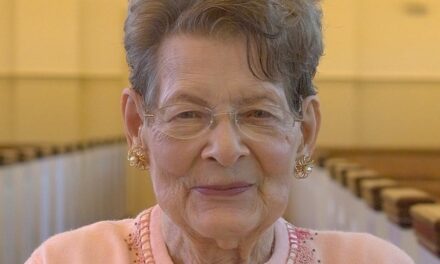Long time resident conductor José-Luis Novo chose an interesting program for his second all-student Guilford Symphony Orchestra concert as part of the Eastern Music Festival. The combination of a real French rarity with a core repertoire Russian work gave an ideal format to display the youngsters’ accomplishments across a wide variety of styles.
Edward Downes, in The New York Philharmonic Guide to the Symphony (one of my favorite crutches), described Francis Poulenc (1899-1963) as “a bundle of contradictions” with “much of his music (being) skeptical, worldly, witty, with more than a touch of malice.” His scores are often bright and sassy with light, open textures. This was evident throughout the Suite from the composer’s ballet Les biches (1924). “Le Jazz Hot” was all the rage in the Paris of the ’20s so it is incorporated with some of the five dance movements of the Suite. Novo brought out all the piquancy and verve of the score. An unnamed principal trumpet gave a crisp, vibrant account of this early important solo. The strings were agile and light and played their pizzicatos as one. Other nicely characterized solos were given by bassoonist, flutist, horn, oboist, and concertmistress Taya Ricker. Poulenc’s deliberate, pungent “raspberry” from the brass and spicy woodwinds were highlights. The entire horn choir was superb in the last dance.
The Symphony No. 5 in D Minor, Op. 47 (1937) played a pivotal role in the harried life of Soviet composer Dmitri Shostakovich (1906-75) who had come under unrelenting criticism from Soviet Officialdom for the cultural crime of “formalism.” Not the least was the censure by Joseph Stalin after the premiere of the opera Lady Macbeth of the District of Mzensk (1935). From this period, Shostakovich’s works were composed with two levels, a surface “positive” show to please the politicians, and a hidden subtext highly critical of tyranny. Darker, more personal pieces were composed “for the drawer” and were only brought out after Stalin’s death. When Symphony No. 5 was premiered, Shostakovich subtitled it as “A Soviet Artist’s Reply to Just Criticism.” The first movement begins with rich melodic elements which get transformed into a harsh, quasi-march. The second movement’s wild “scherzo” is followed by a dark, soul-wrenching “largo.” Shallow “Party apparatchiks” saw triumph in the ferociously dramatic finale. Knowing audiences and musicians recognized this was the brutal, crude “commanded rejoicing.”
All sections of Novo’s ardent student orchestra played beyond themselves, responding to every twist and turn of the conductor’s passionate and well organized interpretation. The opening was superb with the cellos and double-basses really digging into their strings, producing a deep, rich sound. Violins and violas were strongly characterized. Brass were brilliant and the percussion was outstanding, especially the timpanist David Tarantino. Their virtuosity was matched by the woodwinds. The concertmistress’ and Asheville, NC native Taya Ricker’s two major extended solos were stylish and vivid. The duet between the flute and harp in the finale was aptly haunting.











